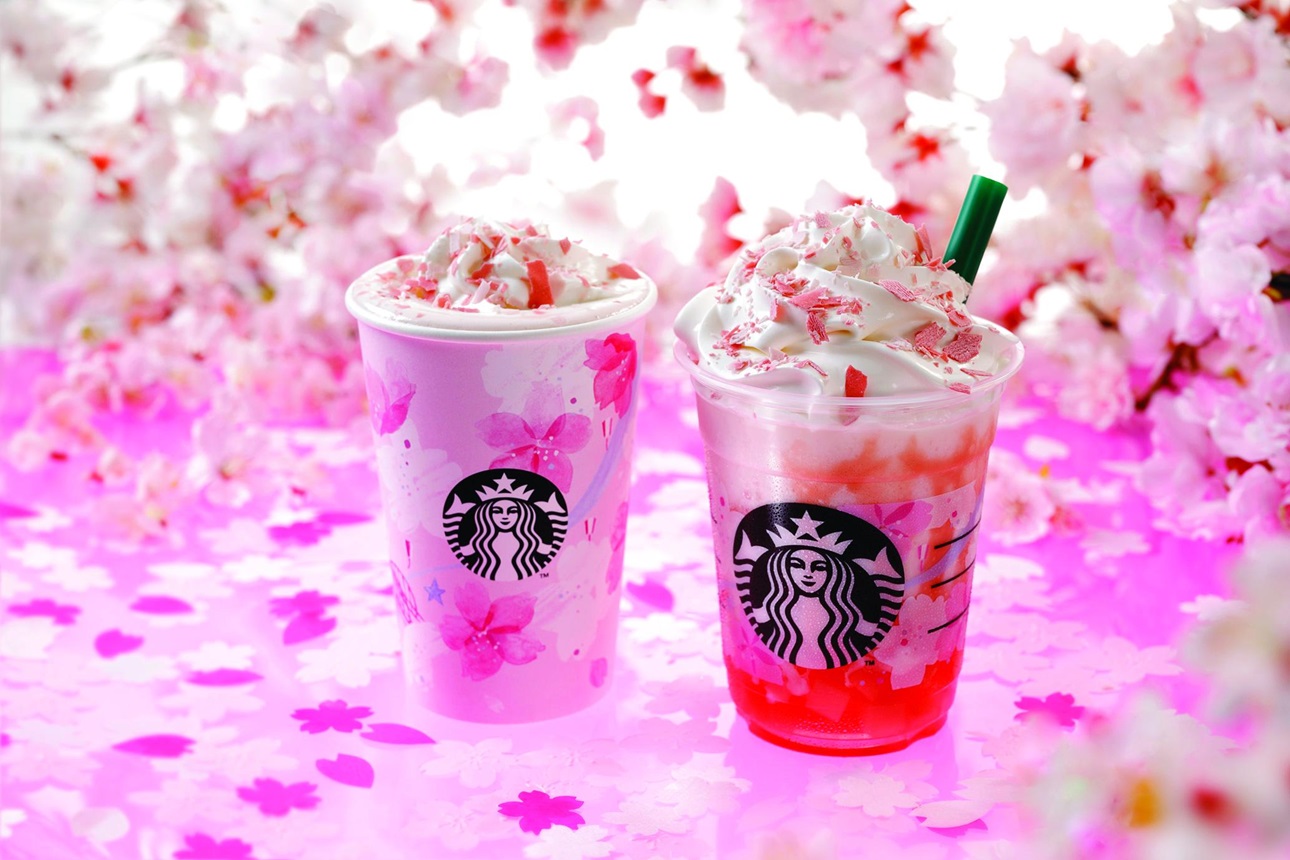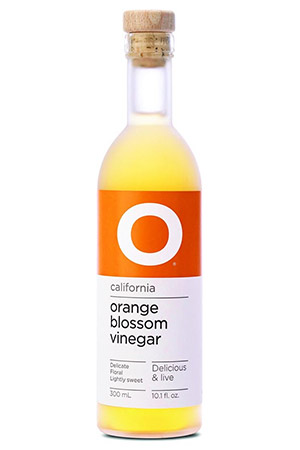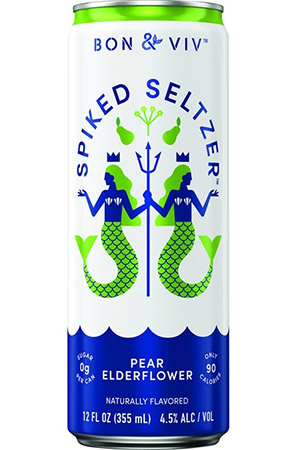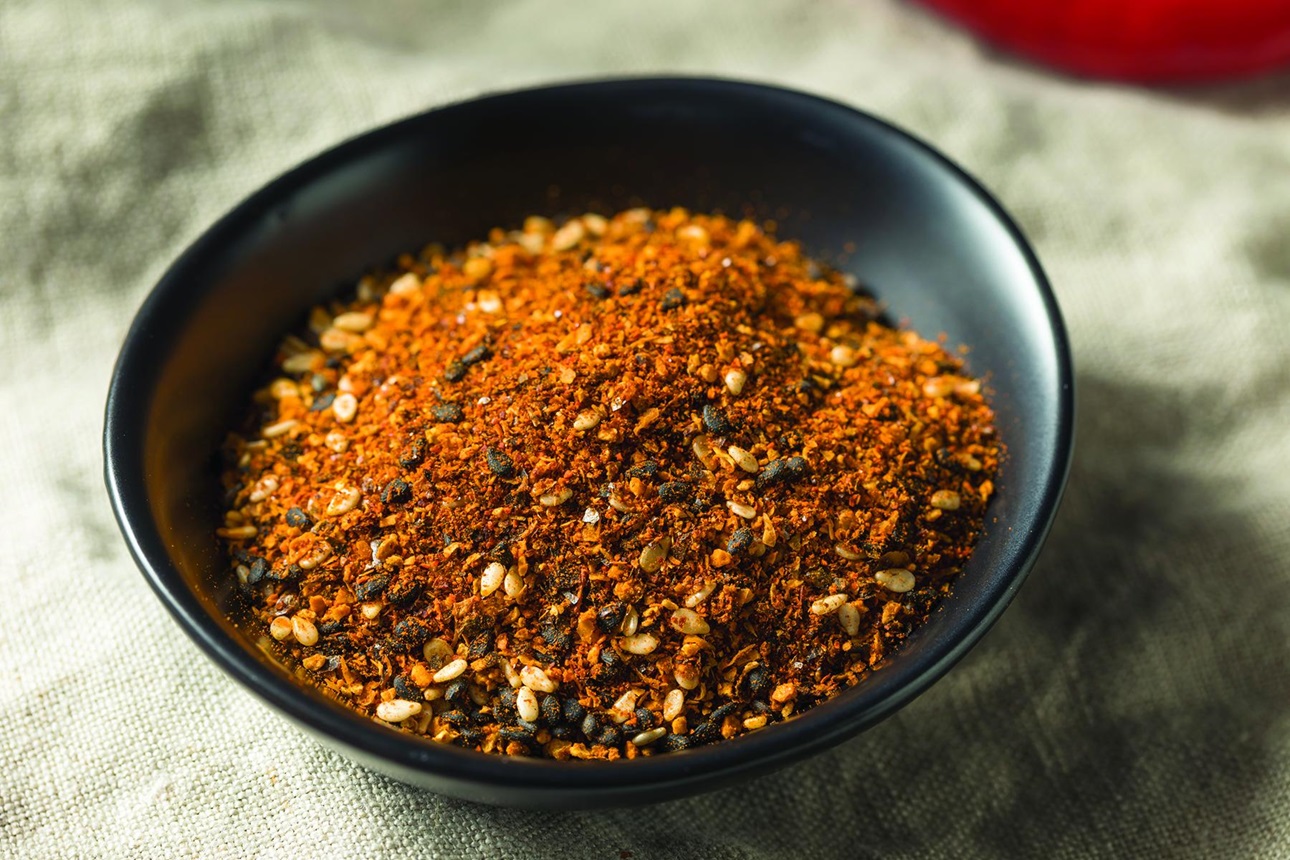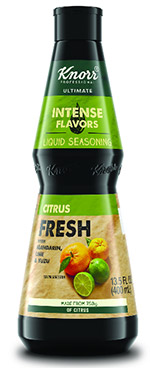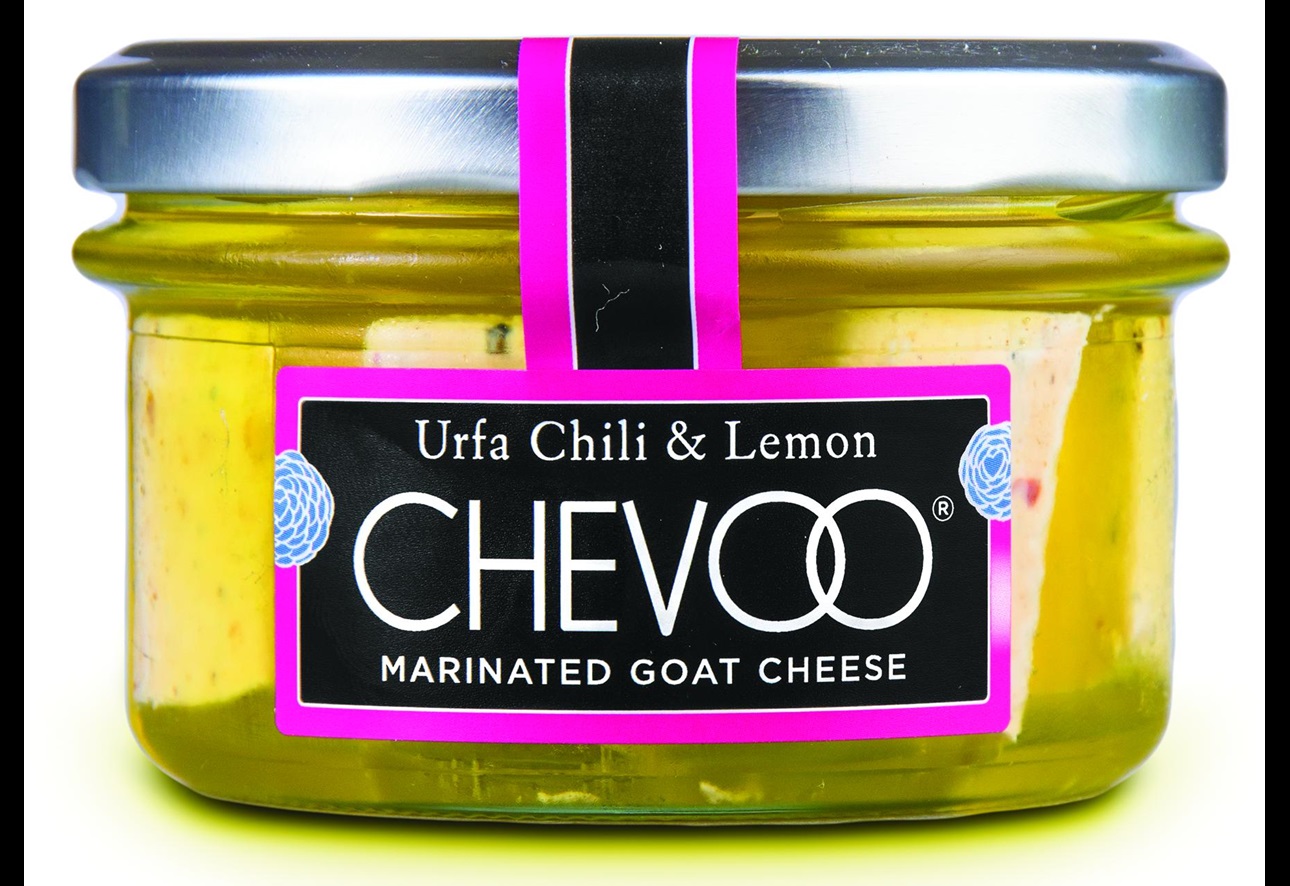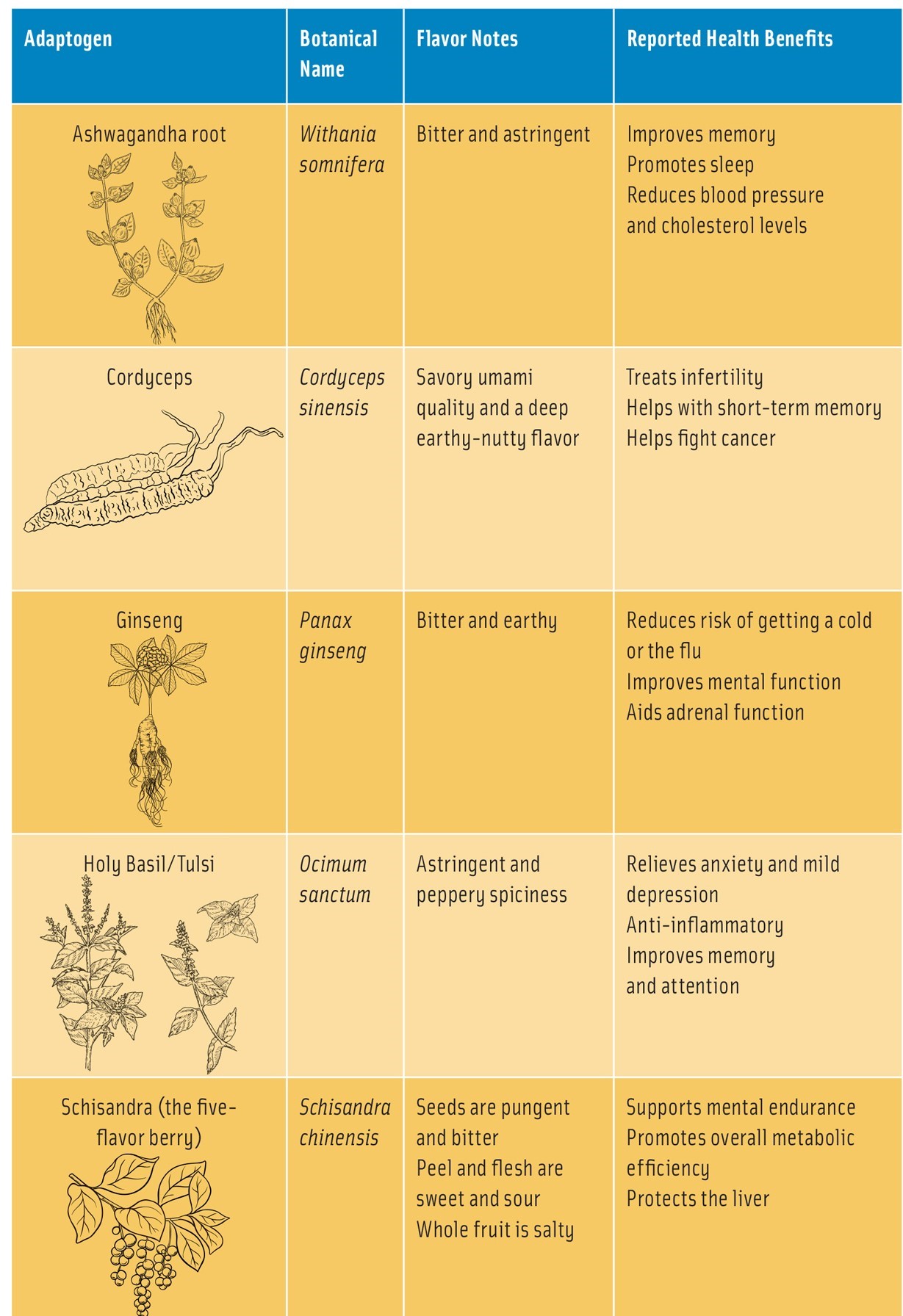
2020 Flavor Forecast
Flavorists, chefs, and trendspotters predict the leading flavor trends that consumers will seek out in the coming year on their quest for global taste experiences and healthier foods and beverages.
Article Content
Global consumers have endless choice and omnichannel access when it comes to food and beverage consumer packaged goods (CPGs), and, according to Nielsen, only 8% of consumers across the globe consider themselves firm loyalists to the products they use. Given this, and the fact that almost half (42%) of global consumers say that they “love to try new things,” how do food and beverage manufacturers succeed in meeting consumer demand (Nielsen 2019)?
“More than ever, consumers expect the products they eat to be flavorsome,” says Kévin Bangratz, marketing researcher at PROVA. “According to marketing research institute GlobalData, flavor is the first buying criterion for food and beverage products, meaning that each consumption experience must awaken the senses.”
According to experts in the industry, much of the demand for new and exciting flavors comes from younger generations. Technomic’s 2019 Flavor Consumer Trend Report found that 40% of those aged 18–34 are visiting a wider variety of restaurants now than two years ago to find new or unique flavors. In fact, 80% of all survey respondents said that they either “actively seek out flavors to try on a regular basis” or “like trying new flavors from time to time” (Technomic 2019).
“Consumers, specifically millennials and Gen Z, get bored incredibly easy these days,” explains Shannon Cushen, director of marketing, Fuchs North America. “They are always seeking out new and different flavors and taste sensations.”
So, what flavors are consumers searching for today and what will they desire in the year to come? With insight from more than 35 flavor companies, chefs, trendspotters, and market research companies, this article presents four flavor trends—florals; earthy; complex heat; and tangy, tart, and sour— to watch in 2020 and details the drivers pushing each flavor toward mass market appeal.
Florals
Releases of floral-flavored products span the spectrum, with snacks, beverages, and bakery leading the way. Between Q3 2017 and Q3 2018, there were 4,495 product introductions globally using floral flavors (FONA 2018a). While classic floral flavors like lavender and rose have been showing up in beverages such as teas and sparkling waters for years, they are starting to appear more broadly in everything from cookies and ice cream to alcoholic beverages. At the same time, new and unique floral ingredients are making their debut in foods and beverages as consumers look for ingredients that support a more plant-based diet and have health-enhancing properties.
The idea of health is moving away from the traditional reductionist approach—that divides the body, mind, and environment into separate parts and focuses on triaging symptoms—to an integrative approach focused on understanding how the body, mind, and environment work together to achieve maximum performance and function. Many floral ingredients offer health benefits while also meeting consumers’ expectations for natural and clean label products.
“We are seeing a rise in floral/botanical flavors and specifically keeping an eye on hibiscus, rose, cherry blossom, orange blossom, and jasmine,” says Pamela Oscarson, consumer insights manager at FONA.
According to Mintel’s U.S. Flavor and Ingredient Trends 2019 report, hibiscus as a flavor has grown 55% on U.S. menus from Q4 2015 to Q4 2018. Firmenich, which declared hibiscus as its 2019 flavor of the year, has noted that the flower’s tart-floral flavor is becoming popular in yogurt, beer, tea, and chocolates, and is especially popular in the United States, Brazil, Mexico, and Denmark, with growth also happening in Spain and Italy. Danone North America’s Wallaby Organic brand debuted No Sugar Added Aussie Greek Yogurt in March 2019 with Peach Hibiscus and Strawberry Rose as two of the three new flavors.
Newer to the food and beverage scene and still relatively unheard of in Western markets are cherry blossom and orange blossom. “Hibiscus and rose are pretty familiar to the market now, but more exotic profiles like orange and cherry blossom are definitely worth trying as more subtle profiles,” says Terry Miesle, senior flavorist at FONA.
Cherry blossom is known as “sakura” in Japanese, and it’s the country’s national flower. Known for its beautiful display of pink blossoms, it is not uncommon to see cherry blossom imagery appear all over Japan every spring. Recently, the blossom has begun to be introduced as a flavor ingredient in food and beverages. In February 2019, Japanese Starbucks stores debuted a limited-edition Sakuraful Frappuccino and Sakuraful Milk Latte inspired by sakura in full bloom, both of which featured a cherry blossom–strawberry sauce.
The cherry blossom will benefit from added exposure when Tokyo hosts the 2020 Olympic Games next summer. “We are going to see another boom in Japanese flavors in 2020 with the Summer Olympics being set in Tokyo,” says Becca Henrickson, marketing manager at Wixon. “However, the flavor interest won’t be the matcha, wasabi, and miso we’ve come to associate with the region, but instead will be a mélange of richer flavors the region has to offer. For example, the nutty kinako flavor or aromatic cherry blossom will start to take center stage.”
With a subtle taste profile and a rare versatility, orange blossom is appearing in a range of products both globally and in North America. According to FONA’s research, consumers perceive orange blossom as both more premium and unique than orange flavor alone. “Aromatic and delicate, the orange blossom is the flower of the orange tree that has historically been used in perfume making. The taste is nuanced, with a subtle orange flavor, a bit lighter and more complex than orange extract” (FONA 2018b).
In Belgium, Biscuiterie Destrée has an Orange Blossom Biscuit, which it describes as a “subtle and delicate biscuit with a delicious orange blossom flavor.” In the United States, Curation Foods’ O Olive Oil & Vinegar brand has an Orange Blossom Vinegar. Said to combine “gently crushed orange blossom essence” and Muscat juice, the company suggests using the vinegar over a salad, salmon, or drizzled over gorgonzola cheese on a baguette.
Combining floral flavors with more common ingredients can help lessen consumer unease with unfamiliar flavors. “Pairing florals with fruits for desserts such as lavender lemon or rose and spice blends has driven the food industry to come up with new and exciting flavors for all types of foods,” says Suzanne Collier Johnson, vice president R&D for Mother Murphy’s Laboratories. For example, Prince Harry and Meghan Markle’s wedding cake in 2018 combined the delicate floral and sweet flavor of elderflower with the bright citrus flavor of lemon to create a springinspired dessert that garnered lots of media attention for its break from the royal tradition of fruit-flavored wedding cakes.
Elderflower has grown 91% over the past four years, according to Datassential. In the United Kingdom, the blooms are often pressed to make cordials, jams, and fritters. Currently, the delicate floral flavor is only found on 7% of U.S. menus (Nation’s Restaurant News 2019). According to Melanie Zanoza Bartelme, global food analyst at Mintel, elderflower is featured on menus at upscale restaurants and is often paired with other botanical flavors. Examples of trendy restaurant menu options include lemon mousseline with raspberry and elderflower sorbet at Brindille in Chicago or a calamansi tart with tarragon and elderflower ice cream at Uchi in Texas. Considering that only 26% of U.S.consumers know about elderflower, and 9% have tried it, there is untapped potential to capitalize on the sophistication that elderflower can bring to CPG beverages, baked goods, and more (Nation’s Restaurant News 2019). Earlier this year, Bon & Viv rebranded its Spiked Seltzer beverage and released new botanical flavors including Pear Elderflower, bringing the subtle floral flavor to the ever-growing hard seltzer water category.
In addition to their health benefits and ties with global cuisines, florals by their very nature can bring a beautiful visual element to foods and beverages. Beverages like Starbucks’ Sakuraful Frappuccino were popular on social media given cherry blossoms’ pink hue. “We live in an Insta-world where consumers eat with their eyes first. The taste of products is what makes the consumer come back for the product, but the visuals play an important role in persuading them to pick up that product,” says Keera Perumbala, marketing manager, Sensient Flavors. Product developers should explore how to play up floral flavors and visual appeal.
Earthy
The health halo surrounding floral ingredients will also drive demand for earthy flavors in the years ahead. Think herbs, spices, roots, and other botanical flavors. “A particular advantage of herbs and spices has been their ability to add flavor without negatively impacting— and often improving—health perceptions. Indeed, several of the fastest- growing herbs and spices, such as turmeric and cumin, are well-regarded for their anti-inflammatory properties,” as a Technomic analyst writes in a report on flavors (2019).
As Luis Angel Fernandez, vice president strategic development at flavor and fragrance company Mane, observes, there is a “significant trend around botanical herbs and roots.” Data from Technomic’s 2019 report backs this up—31% of consumers say they typically crave herbal flavors, up from 26% in 2017. This is likely a result of increased usage of herbs and spices across menu categories.
Consumers are beginning to seek out foods and beverages that contain not only physical health benefits, but mental and spiritual benefits as well. This mindfulness is responsible for the abundance of adaptogenic ingredients like ashwagandha, tulsi, ginseng, maca, reishi, and cordyceps popping up in new food and drink introductions. Adaptogens are defined as nontoxic substances and especially plant extracts that are believed to increase the body’s ability to resist the damaging effects of stress and promote or restore normal physiological functioning. Commonly used in traditional Chinese medicine and Ayurveda, a natural system of medicine that originated in India more than 3,000 years ago, adaptogens are now being promoted for their healing effects and incorporated most prevalently in beverages. (See table above.)
“Ayurveda-inspired and ancient Chinese medicine–inspired adaptogensand other botanicals flavors such as ginseng, tulsi, ashwagandha, and turmeric are appearing in a number of food and beverage categories, ranging from kombucha to yogurt and chocolates,” says Perumbala. “Be ready to hear more about Schisandra berries or maca root, which is a niche flavor today but will get popular in the coming year.”
Relatively unknown by most consumers 10 years ago, turmeric is now appearing in a host of products and recipes—from a turmeric golden latte to more savory roasted carrots with turmeric and cumin. “Turmeric continues to grow on menus—it grew 195% in the past four years—and Haiku, our machine learning engine, predicts it will grow another 51% on menus in the next four years,” explains Mike Kostyo, trendologist at Datassential. “Consumers want functional benefits yet still demand natural, clean label ingredients, so flavors or ingredients that are also adaptogens, have probiotic or gut benefits, give energy, can be classified as superfoods, etc., will all be in demand in the year ahead.”<
Turmeric has the added benefit of infusing the beverage or food product it is added to with a bright yellow to deep orange color. On social media, brightly colored drinks—think Starbucks’ Unicorn Frappuccino—can garner attention and influence purchases. “Golden milk has been gaining popularity and is named for the brilliant color achieved from its main ingredient, turmeric,” says Pam Everett, senior director, Innovation and Product Strategy at S&D Coffee & Tea.
Another macro trend driving earthy flavors forward is the rise of plant-based foods. “As consumers turn to more plant-based and natural foods, earthy, green flavors will be on the rise,” says Kristen Fasulo, marketing associate, flavors – North America, IFF. Mushrooms have been utilized for years to mimic meat in formulations like vegetarian burgers. Now, consumers’ interest in better-for-you ingredients has moved adaptogenic mushrooms into the limelight and they are making their way out of traditional formulations. For example, Vivo Life, based in the United Kingdom, has an entire range of instant beverages featuring adaptogenic mushrooms and other botanical ingredients. Its Raw Hot Chocolate contains reishi mushroom, ashwagandha, cacao, coconut milk, and cinnamon.
“Looking at these adaptogenic mushrooms from a culinary perspective allowed us to really discover their possibilities,” explains Ryan Kukurozovic, corporate chef for Wixon. “We were able to use the expected earthy, umamirich flavors in a range of savory applications from meatballs to pizza crusts and even savory oatmeal. But what’s really fascinating is accentuating some of the naturally sweet notes of the mushrooms in ice cream, beverages, and cookies.”
Formulating with a number of these earthy flavors may become problematic if the flavor overwhelms the consumer, and therefore flavor masking ingredients may be employed. As Kukurozovic explains, “with our flavor masking expertise and technology, we’re able to maximize desirable flavors and minimize or eliminate unwanted ones to create fantastic-tasting products with better-for-you benefits in myriad applications with these mushrooms.”
In addition, earthy flavors may be paired with complementary botanicals and flavors to balance the palate or enhance the functionality and bioavailability of the ingredient. For example, turmeric is sometimes paired with black pepper to increase the bioavailability of curcumin— the polyphenol present in turmeric.
Maca—a cruciferous plant native to Peru— has a slightly nutty flavor and pairs well in chocolate applications, as demonstrated in Rebbl’s Maca Mocha, which combines maca with coconut milk, chicory root, cocoa powder, pink salt, vanilla, and a few other ingredients. The company claims that the maca supports stamina, endurance, and “plant-powered balance.”
“We’ve seen one or two botanicals blended together like ginger elderberry tea,” notes Everett. “As the trend gains popularity, the usage will likely proliferate to four or five botanical components that almost act as the ‘natural multivitamin’ in a glass.”
Product developers have a unique opportunity to check off many items consumers are looking for with earthy flavors and botanicals—healthful and natural ingredients, a connection to other cultures, and a desire for more plant-based fare. However, formulation is important to not only maximize the functionality of the ingredients but also to create a tasty final product that consumers will crave.
Complex Heat
Spicy foods have been increasing in popularity over the past decade, as has consumers’ knowledge of peppers ranging from the scorching ghost pepper to the more nuanced serrano. Today’s consumers are intrigued by more than just a heat level in the spicy foods and beverages they consume. Their preferences are expanding beyond mild, medium, and hot to specific pepper flavors, like ancho, serrano, and habanero. The macro trend for specificity delves deeper than peppers, as consumers seek transparency in the foods they are eating. They want to know the exact flavors and peppers in their foods, so they can learn more about them and fully understand what they are eating.
“From 2017’s ghost pepper to 2018’s Trinidad Scorpion to 2019’s Carolina Reaper, retail brands and foodservice have been calling out some of the hottest peppers in their labels to attract consumers,” says Jean Shieh, director of marketing and innovation at Sensient Natural Ingredients. “However, the heat likely will be cooling off in 2020 and beyond … Many brand owners have recognized that utilizing flavorful chile peppers with mild heat can appeal to larger demographics.”
Consumers across generations crave spicy flavors, but preference for spiciness can vary, with younger consumers showing more interest in very spicy sauces. Technomic’s data show that 59% of consumers aged 18–34 prefer very spicy foods (2019). Manufacturers marketing products to a younger demographic are more likely to play up the heat behind their products. For example, Jelly Belly has had flavors like Sizzling Cinnamon and Tabasco for years, but, as Rob Swaigen, vice president of global marketing for the candy company, explains, Jelly Belly marketers and product developers recently saw an opportunity to further capitalize on the trend by taking the heat to a new level. “We will soon be launching Fiery Five, a new collection of jelly bean flavors under our BeanBoozled brand,” says Swaigen. “Fiery Five is an assortment of five progressively hotter jelly beans in flavors ranging from the smoldering sriracha to the downright scorching hot Carolina Reaper pepper … We think BeanBoozled Fiery Five will be a hot seller among the growing number of heatseeking consumers who will respond to the challenge ‘How hot can you handle?’”<
Consumers’ preferred spice levels haven’t changed much since 2017, but Technomic’s data point to a demand for a greater variety of spicy foods (2019). This is largely being driven by consumers wanting to explore more global cuisines and flavors. “What we’re seeing in consumer interest in different cuisine types is a desire for authenticity and region-specific cuisine, which will continue to drive an appetite for authentic flavors in 2020,” says Mel Mann, director of innovation at Wixon.
Manufacturers will want to convey authenticity with ingredients and preparation styles to capitalize on demands for global flavors. “Doing so can offer more than a flavorful meal, as consumers will feel that the dishes are allowing them to experience another culture’s cuisine,” elucidates Technomic in its 2019 Flavor Consumer Trend Report.
Anna Cheely, senior scientist/manager – applications at Kalsec, predicts that specialty peppers like urfa biber, choricero, and malagueta will take center stage due to their “complexity instead of the purely melt-your-face-off varieties.” McCormick’s Flavor Forecast as shared by Executive Chef Kevan Vetter, revealed some pepper varieties that will begin to gain ground with consumers in the coming years. Named after the Syrian city where it is grown, the Aleppo pepper, also known as the Halaby, is “half as spicy as most chile flakes and delivers a perfectly balanced mix of heat and sweet, rich flavor,” explains Vetter. “The heat builds slowly and increases when cooked.”
Aleppo pepper is featured in muhammara, the Middle Eastern red pepper and walnut spread, and is common in Levantine cuisine, which SupHerb Farms predicts will experience burgeoning consumer interest, especially since Israeli cuisine has received a lot of attention by the foodservice industry in recent years. Named for the large area of the Eastern Mediterranean that surrounds Israel and encompasses Jordan, Lebanon, Palestine, Syria and parts of Turkey, Iraq, and Cyprus, the Levant’s fare is known for a healthful slant, popular ingredients, and intriguing flavors (SupHerb Farms 2019).
With the increased interest in Japanese culture and cuisine, which will continue to grow as the world anticipates the 2020 Olympic Games, many experts in the flavor industry foresee a surge in demand for togarashi, also known as Japanese seven spice. The seasoning blend combines seven distinct spices, including red pepper, nori flakes, ginger, orange peel, Sichuan pepper, and white and black sesame seed. McCormick’s Vetter suggests stirring togarashi into bone broth, traditional miso, and ramen soups, or sprinkling it on grilled meats, seafood, and stir-fry. Kara Nielsen, vice president of trends and marketing at CCD Innovation, agrees that togarashi will see increased interest, due to its “piquant, multisensory, and aromatic” qualities.
Knowing a product’s target audience is key when it comes to deciding how spicy to make it. If it skews toward the younger Gen Z consumer, product developers should feel free to highlight spicier chiles and other ingredients, but for the older consumers, finding a more flavorful and milder spice might be more appropriate. Either way, make sure to call out the type of pepper and, where suitable, tie in the global cuisine.
Tangy, Tart, and Sour
“Tangy, sour, and fermented flavors have been picking up steam relatively rapidly over the past couple of years, and we’re anticipating that these flavors will really take off in 2020,” says Cushen of Fuchs North America. Chefs, flavorists, and trendspotters resoundingly agree that yuzu, a tart Japanese citrus fruit that tastes like a cross between a lime and a grapefruit, will see a surge in popularity in Western countries in the year ahead. According to Mintel’s U.S. Flavor and Ingredient Trends 2019, yuzu has grown on U.S. menus 10% from the Q4 2015 to Q4 2018. “I think it works so well because it has the familiarity of citrus flavors with that little bit of twist that consumers find exciting,” says Mintel’s Zanoza Bartelme.
According to FONA International, yuzu was mentioned on U.S. menus 402 times between Q4 2017 and Q4 2018. Fine dining was the top segment, with entrée, beverage, and appetizer as the top three menu sections with the most yuzu-flavored items. As of April 2019, Asia Pacific was the top global region for yuzu new product introductions, with 365 new yuzu-flavored products hitting the market between 2017 and 2019. Already popular in beverages and confections abroad, yuzu is starting to pop up in savory applications and snacks. Japan’s Calbee Foods recently launched Yuzu, Salt & Lemon Potato Chips, which are made with potatoes, salt, sugar, lemon juice powder, yuzu peel powder, and added flavors.
North America had only 18 new product introductions featuring the citrus fruit between 2017 and 2019 (FONA 2019). “We’ve been waiting a long time for yuzu to hit here in the United States, as it is such a common ingredient in Asian cuisine,” says FONA’s Miesle.
Unfortunately, the yuzu fruit has very little juice and is therefore quite pricey. In an effort to overcome this hurdle and get chefs on board, Unilever Food Solutions’ Knorr foodservice brand debuted its Intense Flavors line of liquid seasonings in February 2019. Among the five flavors, Citrus Fresh “provides the zesty, fresh, and fruit taste of mandarin, lime, and yuzu.”
“An operator may not bring in yuzu juice if they are only using it in one menu item, but if they have a shelfstable product that can be used here and there and adds a pop of flavor and excitement, then we are making it accessible for chefs to have ingredients that they didn’t have before,” explains Dana Cohen, Unilever’s corporate marketing chef. As yuzu starts to appear on more U.S. menus, thanks to products like Knorr’s Citrus Fresh, experts predict it will begin filtering down to mainstream products like marinades and dressings or alcoholic beverages.
“Another citrus that is fabulous is the giant pomelo,” says Cyndie Lipka, master flavorist at Prinova USA, a Nagase Group Company. “It also hails from Southeast Asia and is beginning to gain traction and interest as people begin to look for it more. The peel is pale green with a pinkish fruit on the inside with an enormous albedo [pith]. It is sweeter than, and not as bitter as, its cousin the grapefruit.”
According to Datassential, pomelo is in the inception phase on its Menu Adoption Cycle. It is found on less than 1% of U.S. menus, but mentions of the fruit have increased 46% over the past four years.
Irem Vural, marketing manager for sweet goods, pharma, and oral care at IFF, agrees that new citrus varietals are a growing trend. “While most of the citrus varieties have existed a long time, most of them are still not well-known by customers, such as yuzu, kumquat, dalandan, pomelo, calamansi, tangerine, and som kiew-waan [Thai tangerine]. We will see more of these flavors in the coming years.”
The calamansi is an ancient cross between a mandarin and a kumquat. “Sort of like a sour orange or a sweeter lime, the calamansi brings great authenticity to Filipino and Malaysian dishes, which continue to gain traction with U.S. consumers,” explains Lipka. Straits Preserves, a Singapore-based company that specializes in unique marmalades, won silver in the 2016 World’s Original Marmalade Awards for its Tropical Calamansi variety combining calamansi with pineapple for a tropical take on marmalade.
In addition to their tie to global cuisines, citrus varieties such as yuzu, pomelo, and calamansi also reflect consumers’ demand for authenticity in their food and beverage products. Calling out specific varieties on front-of-pack can help communicate a product’s authenticity. “We continue to see an influx of projects with flavors that desire a connection to a specific geographic location and the concept of provenance (Brazilian orange, Sicilian Lemon),” says Bill Aslanides, senior flavor chemist, Synergy. “The procurement of such materials may be the most limiting factor as time progresses.”
Also propelling sour and tangy flavors forward is the health halo that surrounds them as more consumers become familiar with fermented ingredients and beverages like kombucha. Mintel predicts that “as consumers become more aware of the microbiome, they are seeking sour flavors and fermented and probiotic ingredients to help support a healthy gut.” Sour gut-friendly ingredients and preparations have increased on U.S. menus; from Q4 2015 to Q4 2018, pickled preparations rose 27% and kimchi increased 16% (2019).
Other ingredients appearing more often on menus and grocery store shelves are sumac and urfa biber. A dried red spice used traditionally in Middle Eastern cooking, sumac brings an acidity and tangy lemon flavor to dishes. Hailing from Turkey, urfa biber, noted previously for its complex heat, also offers an acidity and a smoky-sour flavor. The chile pairs well with dairy, adding a depth and subtle heat, such as in Chevoo’s Urfa Chili & Lemon Marinated Goat Cheese.
“Spices like sumac and urfa chile were completely foreign to average folks 10 years ago,” notes Peter Kayaian, culinary operations lead at the U.S. fast-casual restaurant chain sweetgreen. “That sharp acidity you get from acetic and lactic acid via fermentation is driving craveability that keeps folks coming back for more … Other sour items like kimchi and sour beers like Gose or Berliner Weisse are now commonplace on menus and grocery store shelves nationwide.”
Translating Trends to Market
“Much like all trends, we see that people are more comfortable trying new flavors in one of two ways,” explains Lipka. “One is if they are supported with other flavors that they enjoy, as a flavor combination. The second is to realize or associate it as something close to what they already know and love.”
Beverages are a great way to introduce new and unusual flavors, such as botanicals or herbs. According to S&D Coffee and Tea’s Everett, cold brew coffee and tea are still growing in popularity, but new flavors and formats will start to pop up. “Botanical agents—including lemongrass, ginger, lavender, elderflower, and hibiscus—are being infused in everything from cocktails to coffees and teas for their flavor and healthful attributes,” says Everett. “Think fresh turmeric lemonade, carrot juice with ginger, hibiscus iced tea, spicy lemongrass margarita, lavender kombucha, and rose lattes—the options are nearly endless.”
“We can also expect to see fresh flavors from fruit, vegetables, and herbs as well as functional ingredients, adaptogens, and proteins creating exciting new flavored drinks with added benefits,” continues Everett. “As the demand for traditional soft drinks continues to decline, we’ll see flavor-forward waters and alternative caffeinated drinks come to the forefront. Performance-driven beverages with better-for-you ingredients will continue to become more popular.”
Another category that continues to see a lot of flavor experimentation is snacks. According to Technomic, 53% of consumers aged 18–34 say they are hesitant to order items with new or unique flavors at restaurants because they “don’t want to pay for something “I’m not sure I’ll like” (2019). Most snacks are offered at a lower price point, thereby mitigating the risk of trying something out of their comfort zone. “If someone tastes harissa-flavored potato chips and likes the flavor, they are more likely to try harissa on something else,” explains Juliet Greene, corporate chef at Mizkan America.
“Snacks will continue to be an area of innovation, focused largely on better-foryou and functional offerings, including those that err on the side of indulgence while also delivering functional or health benefits,” says Maeve Webster, president of Menu Matters. Living Intentions’ Superfood Popcorn in Tandoori Turmeric combines turmeric extract, ashwagandha extract, dulse, and fermented black cumin seed in the popular and easily snackable popcorn product.
“Frozen foods and condiments have the most flavor innovations,” says Jill Houk, corporate research and development chef at Olam Spices. “Frozen foods offer a convenient way to try an entire meal from a cuisine.” Kahiki’s StirFresh Orange Yuzu Chicken frozen meal offers a risk-free way for consumers to try the tart, tangy flavor of yuzu in a familiar stir-fry dish. And condiments like muhammara served with kebabs open a door to the Levant and the nuanced heat of the Aleppo pepper.
“We are seeing both flavor and functional ingredient innovation in every category we service—from performance and lifestyle nutrition to snacks and bakery items to beverages and beyond,” says Philip Caputo, marketing and consumer insights manager at Virginia Dare. “As consumers seek adventurous flavors, the entire industry is expressing interest in satiating this demand.”
Getting to Know Adaptogens
Adaptogens are nontoxic plants that are believed to help the body resist stressors of all kinds, whether physical, chemical, or biological. Here are some of the most common, their flavor notes, and the reported health benefits.
references
Anonymous. 2019. “Flavor of the Week: Elderflower lends a delicate floral touch.” Nation’s Restaurant News, March 25. https://www.nrn.com/beverage-trends/flavor-week-elderflowerlends-delicate-floral-touch.
Ayales, A. 2019. Adaptogens: Herbs for Longevity and Everyday Wellness, New York: Sterling Press.
FONA. 2018a. Flavor Insight: Freedom to Go Floral. Dec. FONA International, Geneva, Ill. fona.com.
FONA. 2018b. Flavor Insight: Orange Blossom. Aug. FONA International.
FONA. 2019. Yuzu Flavor Insight. July. FONA International.
Mintel. 2019. U.S. Flavor and Ingredient Trends. June. Mintel International, Chicago. mintel.com.
Nielsen. 2019. Total Consumer Report. July. The Nielsen Co., New York, N.Y. www.nielsen.com.
Technomic. 2019. Flavor Consumer Trend Report. Oct. Winsight, Chicago. technomic.com.



